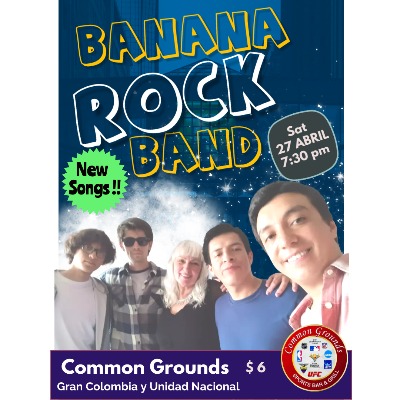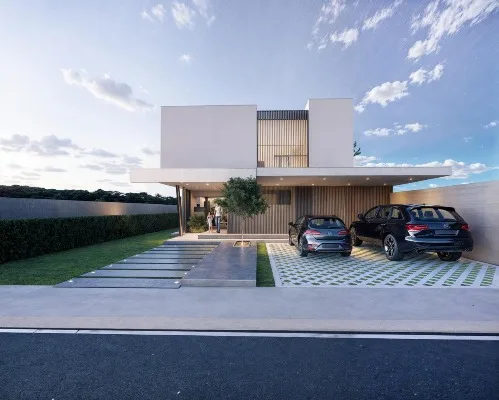‘I have always painted’: An expat artist describes her life on and off canvas
By Miriam Drake
As a professional artist, my career started with crayons and napkins and evolved into oil painting classes when I was 12. Our small Saturday morning studio group painted still-lifes and live models. I was the youngest in the class, and with the least amount of know-how.
As I grew as a painter, and developed as a woman, my own preferences, working habits and rituals also developed. My voice as a painter emerged later in life, after lots of paintings and drawings. Everything I know grew mainly from experience, and with the guidance of two teachers along the way. After several decades of studio painting, I became aware of another way to paint, and my curiosity led me into the dynamic world of painting outside, that’s right, in Nature. I was hooked.
as a woman, my own preferences, working habits and rituals also developed. My voice as a painter emerged later in life, after lots of paintings and drawings. Everything I know grew mainly from experience, and with the guidance of two teachers along the way. After several decades of studio painting, I became aware of another way to paint, and my curiosity led me into the dynamic world of painting outside, that’s right, in Nature. I was hooked.
Outdoor painting is called plein aire. Plein aire painting is very unlike working in the studio. The natural world is vibrant, and full of ever-changing light and dynamic beauty. The painter must stay alert to the subtleties and changes. It is so fresh and engaging. Because of this, the experience of painting outdoors on a sunny afternoon or on an overcast morning is a whole different world.

In the fresh air, the painter must experience the scene and apply paint quickly to capture the drama of shifting light, colors, and weather conditions. This is why some of the most interesting plein air pieces are usually small with few details. Vibrant or subtle suggestions of form and shadow create a dance of “aliveness” unique to plein air work.
While some plein aire artists take their wet paintings back to the studio to finish, I do not. My preference is for the experience to speak for itself. Spontaneity can be lost with even a few “finishing touches” in the field, let alone if they’re added in a place far removed from the site of the work’s original inspiration.
For me, nature holds endless and limitless possibilities for intuitive and sensory pleasure. These drive me to express deeply felt sensations and ideas through the brash or delicate application of rich oil paints on canvas. Few experiences can compare with standing by my wooden easel with long handled brush in hand amid the wind, sprinkles of rain or mist, direct sunlight, the smells of earth and aromatic plants, and the presence of a variety of birds and other living creatures.
For almost 12 months overlapping 2003 and 2004, I focused on traveling the western United States by freeways and back roads in my shiny white soccer mom minivan to find spots of beauty for contemplative reading, camping, and painting. The northern California coast, and two months of living in a simple cottage at Hop Kiln Winery in Healdsburg, all nourished the soul. It was a remarkable time of reflection, observation, and communion with nature. I grew as an artist and as a person. The plein aire paintings from this period are vibrantly alive and resonate with a sweet naiveté, like little desserts. They reflect something special, because something special happened.
 A painting ritual formed during this time. Each day, I wandered out into the sage-fragranced chaparral like a freedom loving child in her canvas apron, paint spattered pants and hiking boots to apply strokes and dabs of colors to little hand stretched canvases. The ritual would begin with a search in the dimming afternoon light, after a satisfying day of painting, for a particularly intriguing set of natural light and structural forms that could inspire the next day’s work. Sometimes I would mark my spot with a stone. At other times, I made notes. Then, early the following morning, without a care in the world and with an air of expectancy, I was up with the birds and ready to take off into the fields, or down a deserted road.
A painting ritual formed during this time. Each day, I wandered out into the sage-fragranced chaparral like a freedom loving child in her canvas apron, paint spattered pants and hiking boots to apply strokes and dabs of colors to little hand stretched canvases. The ritual would begin with a search in the dimming afternoon light, after a satisfying day of painting, for a particularly intriguing set of natural light and structural forms that could inspire the next day’s work. Sometimes I would mark my spot with a stone. At other times, I made notes. Then, early the following morning, without a care in the world and with an air of expectancy, I was up with the birds and ready to take off into the fields, or down a deserted road.
Once the painting spot was located, I would spend a few moments experiencing the space to sense whether the magic was still present. After considering the light and weather, I began removing treasures from my canvas bag. Mindfully placing the wooden easel in a strategic position, I assembled a small collection of precious old fashioned European oil pigments and my old natural bristle brushes onto the clean well used wood palette with a cup of turpentine.
Now, years later, my plein aire easel is packed and put away. I live in the Sierra of Ecuador at the moment, and due to the rapidly changing weather conditions here, I paint in studio exclusively from reference photographs taken of the beautiful, rich terrain around me. These paintings are usually small and medium in size, and exhibit a different character from the plein aire works.
 In the studio, I usually work on a makeshift easel near a window. I prefer to paint in natural light, usually during the first few hours of sunlight. All of my studios, currently and in the past, have had lots of windows. This is the best light for painting. When I work, I like to paint alone, in silence and quickly. Typically, I start with a large house painting brush which has an old wooden handle that I have babied for decades. House painting brushes are the mainstay of my studio work due to the size of the large canvases. Then there are the long handled boar bristle brushes with names like fan, flat, round and filbert. These come in a variety of sizes for fine detail work, and for finishing and adding depth and interest to previously painted areas. At the end, I usually go over the whole painting while it is still damp, with a fine medium sized brush that I have given a haircut. With this brush, I go over the surface of the painting, smoothing out and blending areas to give the canvas a finished look.
In the studio, I usually work on a makeshift easel near a window. I prefer to paint in natural light, usually during the first few hours of sunlight. All of my studios, currently and in the past, have had lots of windows. This is the best light for painting. When I work, I like to paint alone, in silence and quickly. Typically, I start with a large house painting brush which has an old wooden handle that I have babied for decades. House painting brushes are the mainstay of my studio work due to the size of the large canvases. Then there are the long handled boar bristle brushes with names like fan, flat, round and filbert. These come in a variety of sizes for fine detail work, and for finishing and adding depth and interest to previously painted areas. At the end, I usually go over the whole painting while it is still damp, with a fine medium sized brush that I have given a haircut. With this brush, I go over the surface of the painting, smoothing out and blending areas to give the canvas a finished look.
Initially, when I start a large painting, I pull out a pencil or charcoal and place a few lines quickly onto the blank canvas to suggest the proportions and placement of certain blocks of compositional elements. Next, colors are applied quickly, sloppily and boldly, in broad sweeps with my body and intuition. As the image comes alive, there is a delicate balance that emerges between its life and my control. First with the initial sketch using paint, there is a startling strong, fresh image, followed by an ugly phase. Sometimes I am unsuccessful in pulling a painting out of the ugly phase, and have to scrap or recycle the canvas. At other times, the oceanic experience crescendos into something rare and true.
Each painting is a meditation. It evolves out of nothing and grows, and hopefully shines. When I am complete inside with the process, I stand back holding the brush in one hand, and observe. Sometimes the painting is ringing with integrity. This is what I want to see and feel.
From 2004-2011, I worked mostly in large format in Seattle and in southern California. The subject matter of these very large pieces was nature, usually a vast field of vision. There were large, expansive sunsets over horizon lines, there were big skies, there were big skies and the ocean, and simply grand ocean movements. Mostly, these are serene and peaceful meditations that emit lovely peaceful energy.

The artist in her studio.
Another subject in all of my paintings is the invisible transfer of the energy that I felt during the evolution of the painting. I am not painting to please anyone or to produce a work of perfection. What I want while I paint is to feel the raw free energy of the experience. That sensuous, innocent experience combines a sense of complete ease and intense focus during which the painting grows as I guide it. I paint in the rich full present moment from the gut, without thinking much, ok, without thinking. It really is a meditation, and this raw, free, intuitive experience comes through in the finished work somehow.
The large format work began at the suggestion of a Seattle gallery owner. She challenged me to paint big, and to paint lots of canvases. It was exhilarating. I felt more freedom to express and explore, and gradually my voice became apparent in my work. I found my voice! This was a milestone that I never expected to run across, and what it means, is that my work exhibits a distinctive quality unique to me. It took years for this to happen, and the gallery owner’s challenge pushed me in the right direction.
My studio in the Seattle area was actually an unfinished one bedroom apartment over a garage in the little ferry terminal town of Edmonds, north of the city of Seattle. The studio had electricity, but no running water. Fortunately, the city park across the street had a public bathroom with sinks. The neighborhood and Park lay in the midst of a huge primary forest of tall fragrant conifers, which once dominated the landscape before the town developed. The damp aroma of pine was everywhere. We were also very lucky to be close to the marina, and enjoyed the daily flow of mists and breezes off the nearby ocean as well. It was a happy time spent in a heavenly atmosphere.
This little apartment had a large, open kitchen-dining-living space, which was my studio. I stored belongings in the bedroom and unfinished bath. The many large windows surrounding me as I painted produced wonderful natural light. The smooth unfinished plywood floors were perfect, and the owner didn’t care about paint splatters. My dog Tip was with me, and she loved coming to the studio every morning and stretching out on the warm front porch in the sun, or relaxing inside with me on a rainy day. I had furnished the studio with an electric tea kettle, and every afternoon my landlord would stop in for a hot cup of tea after returning from work. We would have a nice chat before he went in for dinner. This was our little ritual. He and his wife had given me a lovely place for very little rent. They enjoyed visiting with Tip and me, and enjoyed having a working artist in their space. Tip adored them, and so did I.
During this time, I also tutored individual painters and led expressive painting classes and workshops. The attendees’ expressive abilities grew before my eyes. With these students, I combined Yi Ren Qi Gong exercises with the painting process, and the results were startling. About a decade before, I studied the expressive painting process developed by a French artist and her physicist husband. The week-long workshop took place on the cliffs above the Pacific Ocean at Esalan Institute at Big Sur near Ventana, on the northern California coast.
In 2007 I moved to southern California where I set up my painting area in a large garage. The easel was constructed of large moving boxes. I painted near the open garage door for a few hours each morning after returning from my early walk and Qi Gong exercises on the beach in Laguna. I was still experimenting with the large canvases, and the imagery was developing into something beautiful and cohesive.
Now that I am living in Ecuador as well as California, there is quite a bit of rich landscape material to work with. I visit the jungle twice a year in southern Ecuador, and hike in the Sierra, so I have accumulated a rich collection of reference material for future work.
All I need now is more time.
_________________
Miriam Drake has a studio in El Centro and in the Laguna Beach area of California. If you would like to see her Ecuadorian oil paintings while she is still in town, you can attend her open studio this Sunday, June 24, from 1-3 p.m. In July, Miriam begins traveling to California, Mexico, New England, Canada and Spain, returning to Cuenca in February. You can write Miriam at: miriamdrakefineart@gmail.com


















